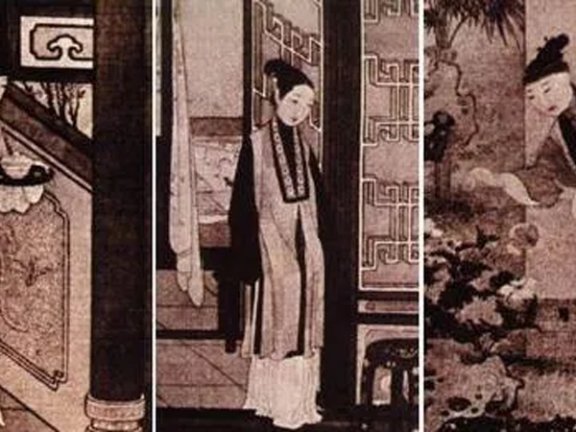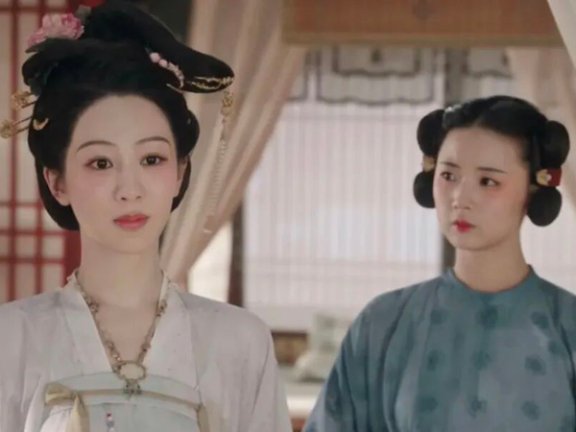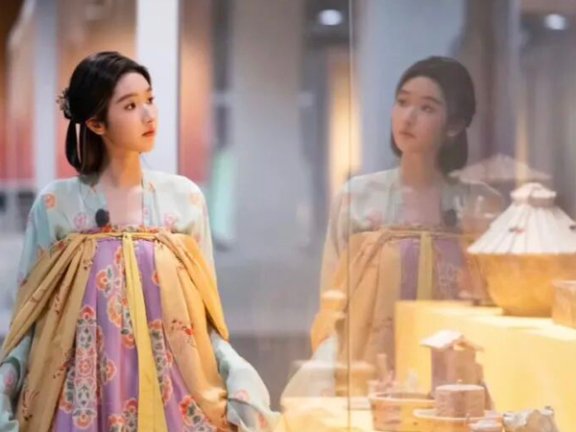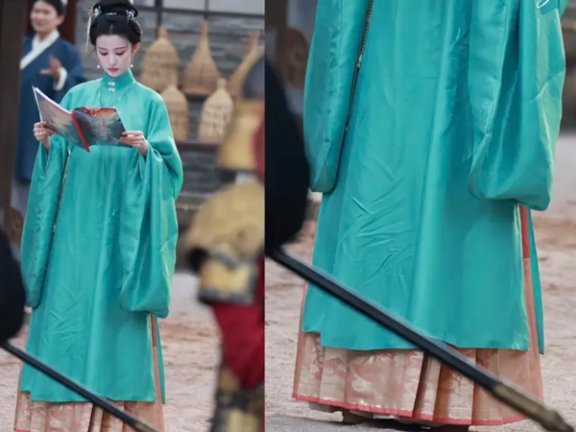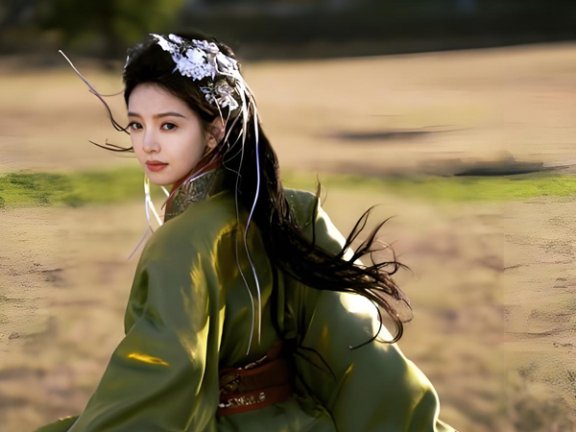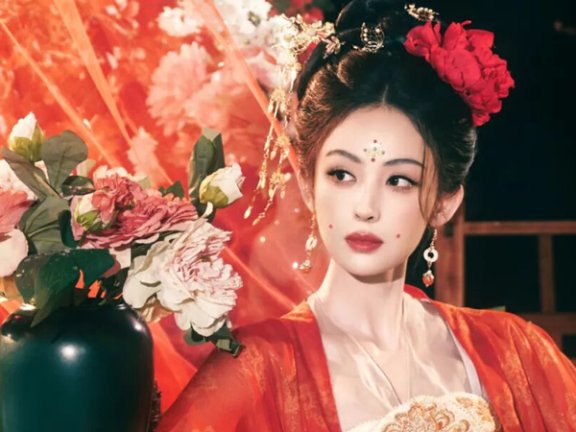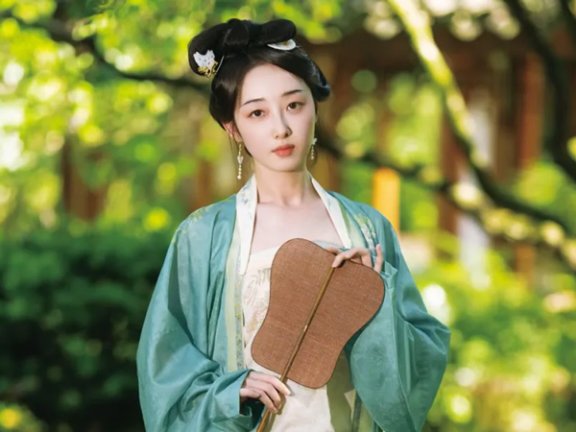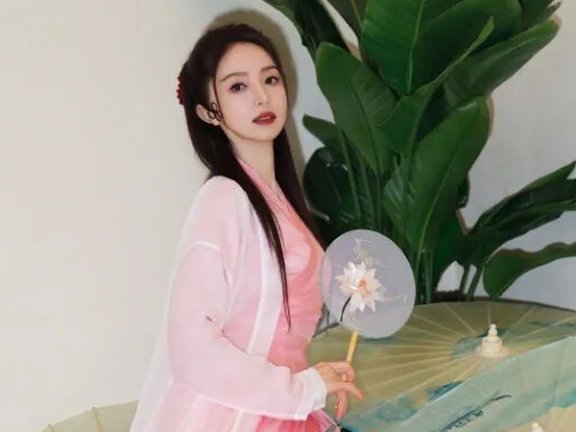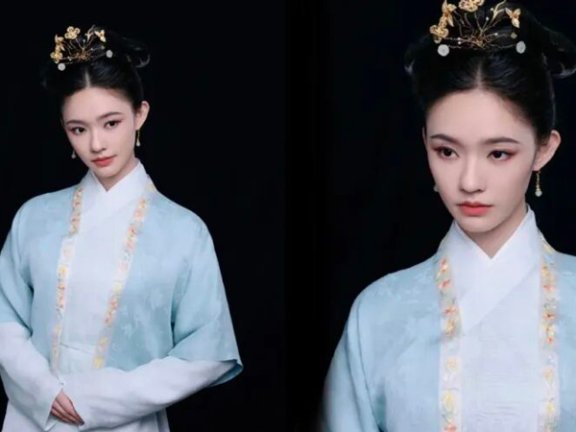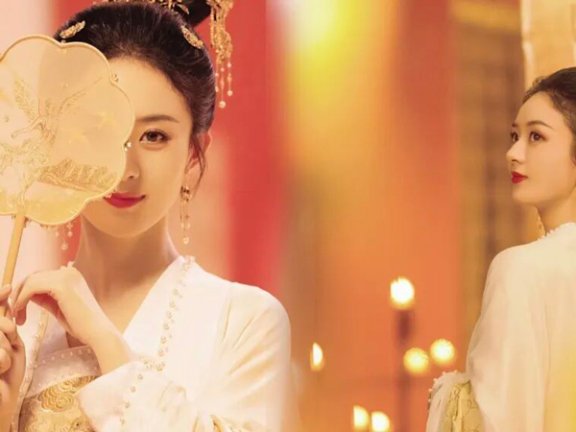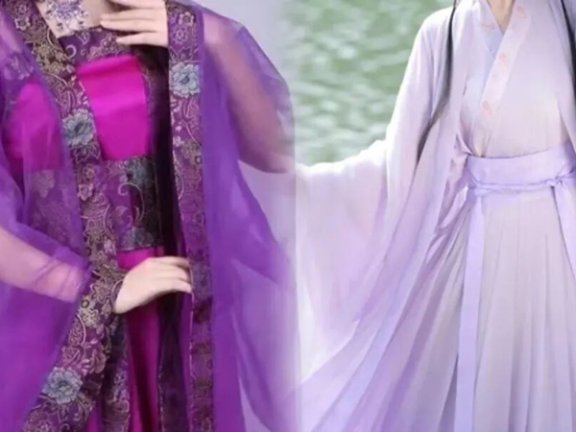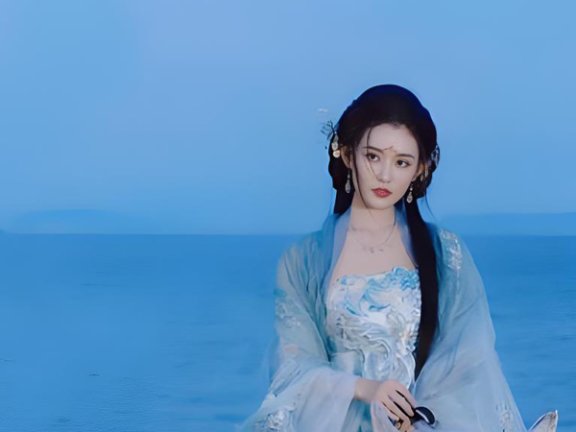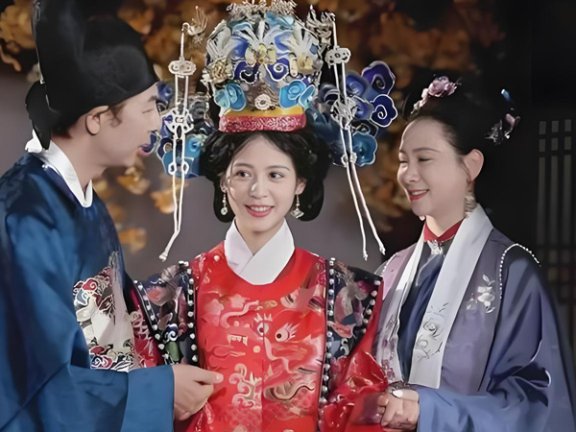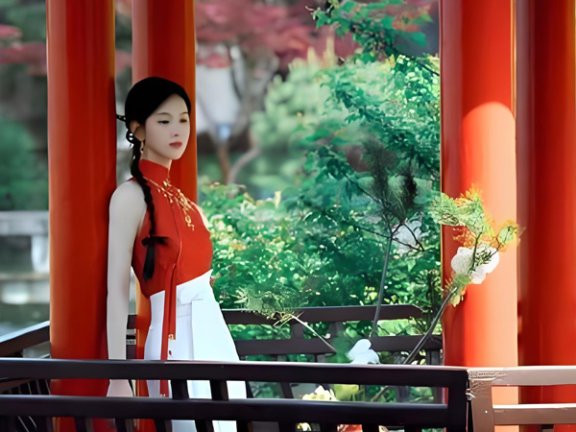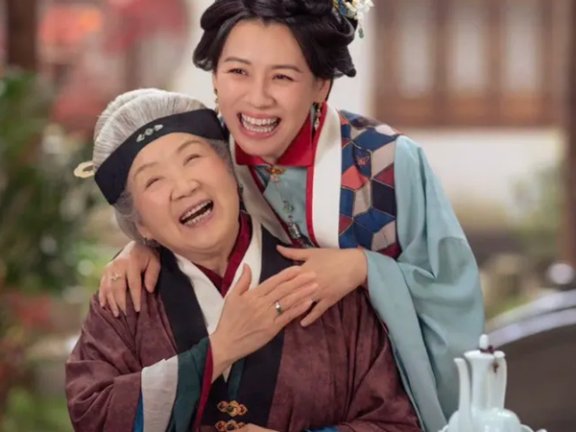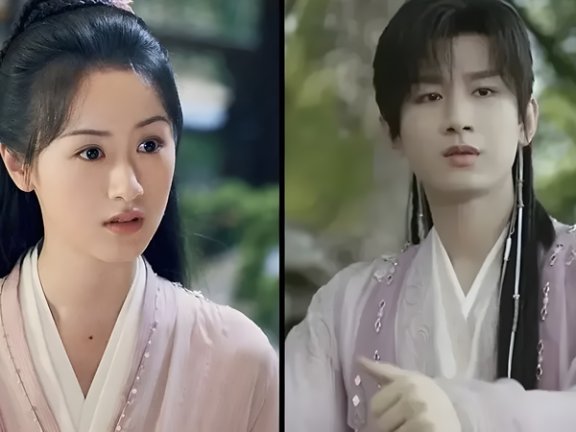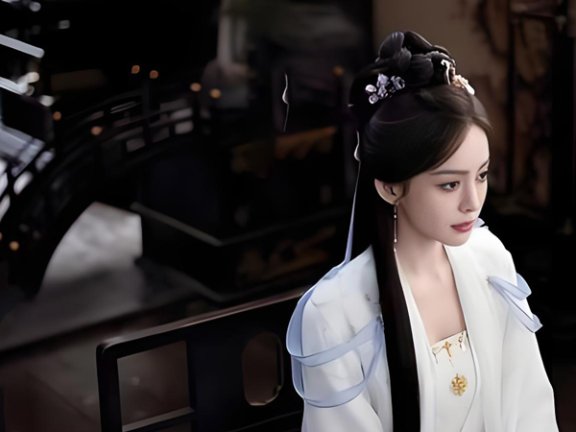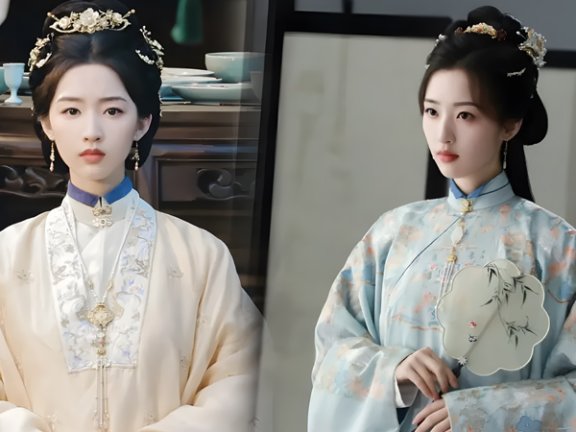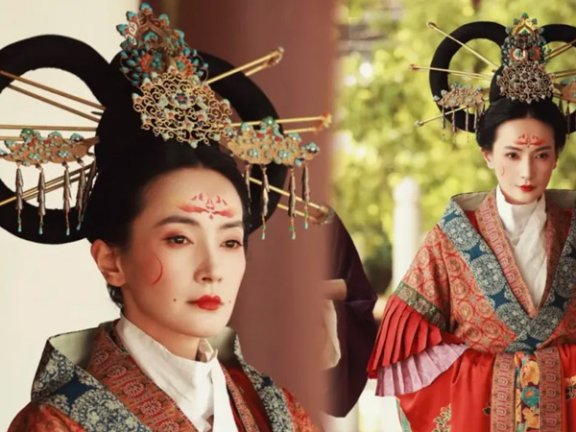-
How Did a Humble Riding Jacket Become the Runway Star of the Ming Dynasty?
Imagine a garment so versatile it bridged the gap between the dusty plains and the gilded halls of imperial palaces. This was the journey of the Bijia (比甲), a sleeveless jacket that evolved from a Mongol practical essential into a defining icon of Ming Dynasty fashion. Its story is not merely one of changing hemlines and fabrics, but a fascinating reflection of cultural exchange, social mobility, and aesthetic innovation. By tracing its path, we uncover how clothing can transcend its original purpose to become a canvas for identity and artistry. Saddle to Street The Bijia's origin is rooted in utility. Designed during the Yuan Dynasty under Empress Chabi (察必) of the Khongirad tribe, its primary function was to facilitate riding and archery. The classic design featured a front opening secured by ties, no sleeves or collar, and a back panel longer than the front. This ingenious cut protected the rider's core from wind while allowing complete freedom of movement for the arms. Initially, it was apparel for the steppe and the aristocracy, a common sight in the Yuan court but rare among the general populace. Following the Yuan-Ming transition, one might have expected this distinctly Mongol garment to fade. Instead,… -
Can a Tang Dynasty Sleeve Walk the Modern Red Carpet?
A photograph stops the scroll. Actress Hui Yinghong (惠英红), a figure synonymous with cinematic gravity, stands not in a contemporary gown but wrapped in the sweeping lines of a traditional Daxiushan (大袖衫). The image sparked immediate fascination: the grand-sleeved robe, a relic of ancient Chinese elegance, was worn not as a historical costume but as a striking modern outer layer. This was not a museum piece but a living garment. The public reaction was a mix of surprise and admiration, highlighting a collective realization. Here was a tangible bridge between a profound aesthetic past and the dynamic language of present-day style. This single sartorial choice posed a compelling question about the very nature of tradition—is it a boundary to be preserved, or a foundation to be built upon? Historical Silhouettes The Daxiushan is far from a monolith; its form evolved across dynasties, each cut telling a story of its time. In the luxurious courts of the Late Tang and Five Dynasties periods, its most dramatic iteration emerged: a robe with a front hem reaching the waist or knees, while the back cascaded into a long, trailing train. Paired with high-waisted skirts, this created an unmistakable silhouette of flowing, dignified movement,… -
Zhang Yuxi’s Fusion of East and West Aesthetics
The image stopped countless scrolling fingers mid-motion. There, bathed in the ethereal lavender haze of blooming wisteria, stood actress Zhang Yuxi (张予曦), transformed. At 34, she was not merely wearing a costume but embodying a vision, a seamless blend of person, place, and tradition. Her photoshoot, set against the unexpected backdrop of European-style architecture draped with cascading purple flowers, became an overnight sensation. It was more than a celebrity fashion spread; it was a statement. This moment captured a powerful contemporary dialogue between a modern Chinese woman and an ancient sartorial art form, suggesting that true elegance is not bound by era or age, but is a living, breathing continuum. A Portrait in Violet The genius of the look lies in its meticulous harmony. Zhang Yuxi's Hanfu is a soft symphony in powdered lavender and plum, its delicate embroidery tracing floral patterns that seem to echo the living wisteria around her. The ensemble avoids ostentatious grandeur, opting instead for a refined, almost poetic grace. A pivotal detail is the outer robe, trimmed with a subtle, downy fringe. This touch adds a tangible texture and depth, preventing the flowing silks from appearing flat, and introduces a whisper of delicate luxury. Every…- 0
- 0
- 5
-
How Attire and Hairstyles Showed Servant Status in Imperial China
In contemporary historical dramas set in ancient China, a puzzling visual trend often leaves viewers scratching their heads: maidservants and their mistresses appear almost identically dressed, differentiated only by slightly less elaborate accessories. This blurring of costume hierarchies challenges audience perception and raises questions about historical authenticity. What were the actual sartorial rules for servants in imperial households? How did clothing and hairstyles clearly demarcate social standing? Moving beyond modern screen interpretations, historical artifacts and paintings reveal a defined and practical aesthetic for maidservants, one that balanced functionality with visible subordination. Understanding these codes not only enriches our view of the past but also offers a lens to critique current cinematic practices. Attire and Status Servants' clothing across dynasties was fundamentally shaped by practicality and symbolism. Unlike their mistresses, who wore luxurious silks and brocades, maidservants typically donned garments made from humble Mian (棉, cotton) and Ma (麻, linen). These fabrics were affordable, durable, and suited for daily chores. After cotton's proliferation in the Ming dynasty, it became the standard material for working attire. The basic ensemble often consisted of a simple, cross-collar top worn over trousers, allowing for ease of movement during tasks like cleaning, serving, or accompanying the…- 0
- 0
- 24
-
Unveiling Practical Functions of Zhongyi in Ancient China
Have you ever noticed how characters in historical dramas often retire for the night dressed in pristine white garments, and wondered if they ever worry about stains? This common visual isn't a costume designer's oversight or a symbol for something else; it is a deliberate and historically accurate representation of a fundamental layer of traditional attire known as Zhongyi (中衣). Far from being simple sleepwear, this undergarment served as the versatile core of ancient Chinese dress, functioning as both a formal inner layer and comfortable loungewear. Its enduring presence on screen hints at a sophisticated sartorial system where every piece, even the hidden ones, played a crucial role in aesthetics, etiquette, and personal comfort. Historical Roots The concept of Zhongyi is deeply embedded in classical texts. Its name, literally meaning "middle clothing," originates from the ancient glossary Shi Ming (释名), which describes its position between the innermost undergarments, or Xieyi (亵衣), and the outer robes. This placement was not merely practical but symbolic, representing a structured approach to dressing that prioritized propriety. In the hierarchical system of traditional dress, the Zhongyi was the essential buffer, a layer of modesty and refinement that separated the private self from the public presentation.…- 0
- 0
- 16
-
Reimagining Hanfu Through Wang Yuwen’s Viral Moment
When Wang Yuwen (王玉雯) stepped into a museum wearing a flowing Hanfu outfit on the variety show Wow the World (地球超新鲜), she did more than just turn heads—she sparked a conversation about how traditional clothing could weave itself into the fabric of modern life. Viewers flooded social media with praise, noting how natural and approachable she looked, as if this centuries-old style had never left everyday wardrobes. Her choice wasn't a costume for a period drama but a thoughtful nod to the past, blending history with contemporary ease. This moment highlights a growing curiosity about Tang Dynasty fashion and its potential revival, inviting us to imagine a world where such garments are as common as jeans and t-shirts. What made her appearance so relatable, and why does it matter today? The answers lie in the details of the attire, the craftsmanship behind it, and the cultural threads that connect then and now. The Tang Style Wang's ensemble featured a Qixiong (齐胸) style, where the skirt is tied high above the chest, a design popular during the peak of the Tang era. Unlike the elaborate updos often seen in historical depictions, she paired it with a simple, everyday hairdo, making the look…- 0
- 0
- 15
-
Wang Churan’s Floor-Grazing Top in The Ming Dynasty Youth
In the popular period drama The Ming Dynasty Youth (明月录), actress Wang Churan (王楚然) wears a long, flowing top that extends to her ankles, nearly obscuring the skirt beneath. This styling choice has sparked online debates about historical accuracy and fashion sense. Viewers question whether such lengthy garments were common in ancient times and if they diminish the visual appeal of traditional attire like the horse-face skirt. The discussion highlights a broader curiosity about how historical clothing influences contemporary costume design in television. This article explores the origins and significance of these elongated tops, tracing their roots to the late Ming Dynasty and examining their modern reinterpretations. Historical Roots During the late Ming period, particularly after the mid-Jiajing (嘉靖) era, women's fashion saw a shift toward longer, more subdued garments. Historical records, such as those by scholar Yang Shen (杨慎) in his work Sheng'an Waiji (升庵外集), note that women's tops resembled men's attire in length, often hanging just above the ground. This style emphasized a slender, effortless silhouette, with sleeves so wide they could span over a meter. The trend reflected societal changes, as economic pressures led to a preference for simplicity over opulence. Garments from this era, like those…- 0
- 0
- 17
-
The Quiet Power of Zhang Ruonan’s Green Warring States Robe
In the ever-evolving landscape of fashion and media, a striking trend has emerged from the depths of history, capturing imaginations and challenging long-held stereotypes. Zhang Ruonan (章若楠), a prominent figure in the entertainment industry, recently donned a vibrant green Warring States robe in a photoshoot that has sparked widespread discussion. This attire, rooted in ancient Chinese history, is not just a garment but a narrative tool that blends elegance with resilience. Traditionally, the concept of a "big female lead" in stories and style has been associated with bold, assertive visuals, often dismissing softer aesthetics as weak or insignificant. However, Zhang Ruonan's portrayal in this robe defies such narrow definitions, illustrating how gentleness can coexist with unwavering determination. Her appearance, set against natural backdrops like lush grasslands and wooded areas, evokes a sense of timeless beauty, as if she's a character from a historical epic, poised between vulnerability and strength. This photoshoot does more than showcase fashion; it invites viewers to reconsider what it means to be powerful, suggesting that true strength often lies in subtlety and grace. As we delve into this phenomenon, it becomes clear that the Warring States robe is more than a trend—it's a symbol of a…- 0
- 0
- 14
-
Tang Dynasty Hanfu: How Celebrities and Flattering Styles Win Hearts
In today's fashion landscape, traditional attire from China's Tang Dynasty is experiencing a vibrant resurgence. This era, celebrated for its cultural prosperity and artistic innovation, has left a lasting legacy in clothing that emphasizes grace and adaptability. Hanfu styles from this period, with their flowing silhouettes and intricate details, are being rediscovered by a new generation. What makes them particularly appealing is their ability to flatter diverse body types and facial features, moving beyond rigid beauty standards. From curvy figures exuding opulence to slender frames radiating elegance, Tang Hanfu offers a versatile canvas for self-expression. Recent television series and celebrity endorsements have amplified this trend, making it more accessible and inspiring people to embrace their unique beauty through historical fashion. Flattering Designs The Qixiong Ruqun (齐胸襦裙) stands out as a quintessential Tang Dynasty garment, known for its high-waisted cut that rests above the bust. This design creates a universally flattering shape by avoiding tight fits and instead using soft, draping fabrics that flow with the body. For those with curvier builds, the loose structure and billowing sleeves help smooth lines and convey a sense of dignified luxury. Slimmer individuals find that the lightweight materials enhance their natural grace, adding an…- 0
- 0
- 24
-
How a Historical Attire Becomes Modern Style
In recent years, the traditional attire of the Song Dynasty, referred to as Hanfu, has captured the attention of fashion enthusiasts worldwide. This style, distinct from the lavish Tang or stately Ming designs, emphasizes understated grace and simplicity. Its flowing silhouettes and muted palettes evoke a sense of calm, making it a favorite for those seeking a break from today's fast-paced trends. As more people explore this historical fashion, it highlights a growing appreciation for attire that blends artistry with everyday wear, offering a fresh perspective on personal expression through clothing. Historical Roots The origins of Song Dynasty Hanfu trace back to a period in Chinese history marked by cultural refinement and scholarly pursuits. During this era, clothing was designed to reflect values like modesty and intellect, with garments often featuring layered pieces such as the Beizi (褙子), a long outer robe, and subtle embroidery. This approach contrasted with earlier dynasties, focusing on lightweight fabrics and clean lines that enhanced natural movement. Over time, these elements have been preserved in modern interpretations, showcasing how historical context shapes contemporary fashion choices. Key components like the inner garment, often a simple top, and skirts with pleats, contributed to an overall aesthetic of…- 0
- 0
- 16
-
46-Year-Old Dong Xuan Stuns in Pink Hanfu
When photos of Dong Xuan (董璇), a 46-year-old actress, surfaced online in a stunning pink Hanfu ensemble, they instantly captivated audiences. The images, set against a backdrop reminiscent of Jiangnan's scenic beauty, showcase her in a flowing, gauzy dress that seems to dance with the breeze. This isn't just another celebrity photoshoot; it's a vivid portrayal of classical elegance meeting modern grace. Her choice of a round fan adorned with lotus motifs and traditional embroidered shoes completes the look, making it a topic of widespread admiration. At an age where many might shy away from bold fashion statements, Dong Xuan demonstrates how timeless style transcends generations. The response has been overwhelming, with fans and fashion enthusiasts alike praising her ability to embody the spirit of traditional Chinese aesthetics so effortlessly. This moment highlights a growing appreciation for cultural elements in contemporary media, and Dong Xuan's presentation serves as a perfect entry point into this discussion. The Ensemble The pink gradient Hanfu worn by Dong Xuan features layers of sheer silk that create a soft, ethereal effect. Its design includes delicate sleeves that flutter gently, evoking the tranquil atmosphere of a water town in southern China. The color transitions from light…- 0
- 0
- 18
-
Uncovering the True History and Legacy of China's Banbi Garment
When actress Lin Yun (林允) appeared on the cultural show National Treasure, her outfit sparked immediate debate online. Viewers questioned whether her sleeveless top resembled a traditional maid's uniform, but fashion historians were quick to clarify. She wore a Banbi (半臂), a classic Chinese garment that has been misunderstood for centuries. This piece is not defined by social status but by its practical and stylish design. The confusion highlights how modern perceptions often oversimplify historical fashion. This article delves into the true nature of the Banbi, tracing its evolution from ancient courts to contemporary wardrobes, and challenges the stereotypes that have long surrounded it. Garment Basics The Banbi is essentially a half-sleeve jacket worn over other layers, similar to a modern bolero or vest. Its name derives from its sleeve length, which typically ends at the elbow. One common style is the Duijin (对襟), characterized by a front opening with symmetrical sides. This design allowed for easy movement and versatility, making it a staple in various dynasties. Unlike the assumption that it was solely for servants, historical records show it was worn by women across different social classes. The garment could be paired with long-sleeved robes or dresses, adapting to…- 0
- 0
- 20
-
Is Zhao Liying's Tang Dynasty Dress Real?
When Zhao Liying (赵丽颖) shared her recent photoshoot, fans were captivated by a dress that seemed to step out of ancient China. This garment, featuring an outer chest wrap and flowing sleeves, has ignited discussions about its place in history. Often called the Hezi (诃子) skirt today, it blends elegance with mystery, raising questions about its authenticity. As viewers admire its beauty, they wonder if such attire truly existed in the past or if it is a modern reinvention. This article explores the story behind this style, from its debated origins to its role in contemporary fashion, offering insights into how we connect with history through clothing. What is Hezi? The term Hezi refers to a type of chest wrap that forms part of a skirt ensemble, commonly seen in historical-inspired outfits. In modern Hanfu circles, it describes a dress where the chest piece is worn over an inner layer, creating a distinctive look. This design gained popularity through media portrayals, especially in period dramas, where it symbolizes Tang Dynasty aesthetics. However, the name itself is a recent creation, not found in ancient texts, which adds to the confusion. People often associate it with grace and tradition, yet its definition…- 0
- 0
- 38
-
The Game-Changer Behind China's Hit Historical Short Dramas
Could the secret to a hit historical series be hanging in a ready-to-wear shop? A noticeable shift is occurring behind the scenes of China's booming short drama industry. Instead of commissioning custom-made costumes, an increasing number of production crews are turning to off-the-rack Hanfu. This move is not just about cutting costs; it is a conscious choice that is reshaping visual storytelling, winning audience approval, and opening a new front in the promotion of traditional culture. The clothes characters wear are becoming a direct link to a authentic past. Costume Clash What is the real difference between a ready-made Hanfu and a custom drama costume? The former is a garment produced for public sale, designed according to historical patterns and tailoring techniques. Its primary advantage is authenticity. Many of these garments are replicas based on archaeological finds, like textiles from the Bijiatan (毕家滩) tomb or wooden figurines from Astana (阿斯塔纳). They offer a tangible connection to a specific era. Using these accurate garments elevates a production's quality. For a series set in a defined dynasty, correct clothing shapes pull the audience deeper into the world. A character dressed in a cross-collared top under a square-collared coat with a Mamianqun (马面裙)…- 0
- 0
- 27
-
Unpacking Jiang Yiyi’s Xiapu Photoshoot
Is a photoshoot by the sea just a photoshoot, or is it a strategic move in an actress's career? When Jiang Yiyi (蒋依依) arrived in Xiapu (霞浦) County with its dramatic coastline, she wasn't just there to take pictures. The resulting series of images, drenched in the golden light of a late summer sunset, quickly amassed over 200 million views on Weibo. This wasn't merely a display of traditional Hanfu beauty against a stunning natural backdrop. It was a meticulously orchestrated event that laid bare the intricate mechanics of fame, aesthetics, and commerce in today's entertainment industry. The waves crashing behind her were not just scenery; they were a metaphor for the powerful, often unseen, currents shaping a young artist's path. The Engineered Image Every element in the Xiapu photoshoot was a calculated decision. The sea breeze, thick with salt, was a natural, unpaid special effect, making the thin gauze of the Hanfu dance authentically. The ocean itself served as a giant, organic reflector, casting a flawless, porcelain-like glow on her face. This clever use of nature created an illusion of effortless beauty, effectively masking the substantial investment behind the scenes. A single image of her on horseback became a…- 0
- 0
- 30
-
Weng Hong's Daughter Marks 18th with Jiji Li
When the daughter of Hong Kong actress Weng Hong (翁虹) turned eighteen, she didn't want a modern party. Instead, her family organized a traditional Jiji Li (及笄礼), a Chinese coming-of-age ceremony for young women. The celebration, held in full Hanfu attire, was a beautiful and meaningful departure from the Western-style birthdays common today. This deliberate choice highlights a growing trend of cultural rediscovery, where ancient traditions are being revived to mark significant life milestones with a profound sense of heritage and identity. A Ceremony of Red and Respect The centerpiece of the event was the young woman known online as Crystal, dressed in a vibrant crimson Ming Dynasty-style Hanfu. The elaborate outfit and intricate hair accessories, including a carefully chosen hairpin from her mother, transformed her. She carried herself with a grace that resonated with the ceremony's solemnity, appearing every bit the poised young noblewoman from a historical drama. The visual impact was powerful, connecting her to a lineage of Chinese women who have participated in this ritual for centuries. Her parents were equally invested in the authenticity of the day. Weng Hong and her husband, Liu Guanting (刘冠廷), dressed in traditional scholarly and aristocratic attire, fully embodying their roles.…- 0
- 0
- 34
-
Chen Duling’s Zhuozheng Garden Hanfu Photoshoot
In an era dominated by fast-paced digital consumption, a recent photoshoot featuring Chen Duling (陈都灵) at Zhuozheng Garden (拙政园) has captivated millions, sparking conversations beyond mere aesthetics. Dressed in traditional Hanfu attire, her red and white ensemble against the garden's classical backdrop evokes a sense of timeless elegance. This imagery resonates deeply in a society grappling with constant noise, offering a visual pause that challenges modern beauty norms. Rather than a fleeting trend, it invites reflection on how authenticity and craftsmanship can thrive today. The response highlights a growing appetite for substance over speed, where every detail tells a story of cultural continuity and personal resonance. Craftsmanship Revived At the heart of Chen Duling's photoshoot lies an emphasis on meticulous artistry. Each element, from the hand-stitched Pan Kou (盘扣) buttons to the Baiyuzan (白玉簪) hairpin, was crafted by skilled artisans, underscoring a dedication to time-honored techniques. This attention to detail contrasts sharply with mass-produced Hanfu variants that prioritize speed over substance. The deliberate choice of materials and methods not only enhances visual appeal but also reinforces the garment's relationship with the wearer's form. It transforms clothing into a narrative of patience and precision, making beauty tangible through every thread and…- 0
- 0
- 45
-
Illustrated Ancient Clothing: Learn Hanfu’s Basic Features and Forms
Hanfu represents the enduring attire system of the Han ethnic group, reflecting centuries of cultural practices and aesthetic values. This clothing is defined by precise elements like the right-crossing collar, broad sleeves, and hidden ties, distinguishing it from modern interpretations. It serves as a functional record of China's historical identity, blending philosophy with daily wear. Early forms such as the Shenyi (深衣) from the Pre-Qin era laid the foundation, emphasizing unity in design. The Han period featured the Quju (曲裾) for formal events, while the Tang dynasty's Qixiong Ruqun (齐胸襦裙) expressed vibrancy and freedom. Song styles like the Beizi (褙子) favored understated elegance, and Ming innovations such as the Mamian Qun (马面裙) and Liling Aozi (立领袄子) highlighted technical mastery. Each shift mirrored societal values, creating a rich visual legacy. https://youtu.be/O8j8zk_WsBo 1. The basic characteristics of Hanfu Hanfu represents the traditional dress of the Han Chinese people, with a history that stretches back millennia. Its design principles are deeply rooted in cultural practices and aesthetic ideals, offering a unique perspective on garment construction. This clothing style emphasizes fluidity and grace, moving beyond mere fashion to embody a way of life. Each element of Hanfu serves a purpose, blending form and function…- 1
- 0
- 119
-
Were There Patchwork Clothes in the Tang Dynasty?
Did ancient Chinese fashionistas wear patchwork? The answer might surprise you. Long before sustainable fashion became a modern buzzword, a remarkable garment was turning heads in the dynasties of old. This was not merely clothing, but a canvas where artistry met resourcefulness, creating a style so enduring that its echo can be seen on runways today. The story of this attire weaves together threads of Buddhist humility, parental love, and the irrepressible human desire for aesthetic expression, forming a rich tapestry of cultural history that challenges our perceptions of vintage fashion. More Than Fabric The Shuitian Yi (水田衣), or "water field garment," earned its name from a charming visual metaphor. Its composition of irregular, multi-colored fabric patches was said to resemble the fragmented layout of a rice paddy. While its popularity peaked later, evidence of such patchwork clothing exists from the Tang Dynasty, mentioned in the poetry of Wang Wei. This style is a close relative of the monastic Baina Yi (百衲衣), or "hundred-patch robe," worn by Buddhist monks. These robes were constructed from scraps of cloth gathered through alms, serving as a physical manifestation of ascetic principles—practicing frugality while transcending material attachment. A parallel tradition existed for children, known…- 0
- 0
- 41
-
Why Is Men’s Clothing in Today’s Costume Dramas More Feminine?
In recent years, viewers of Chinese historical television series have noticed a curious trend: the costumes worn by male characters increasingly resemble those designed for females, featuring slender cuts, pastel colors, and flowing fabrics that emphasize a delicate aesthetic. This shift raises questions about how gender is represented in period dramas and whether it reflects historical accuracy or modern creative liberties. While ancient China did have instances of unisex clothing, distinctions based on color, pattern, and occasion were strictly maintained after certain dynasties. Today's productions, especially fantasy genres like Xianxia immortal heroes dramas, often prioritize visual appeal over historical fidelity, leading to a blending of masculine and feminine elements. This article examines the historical context of gender-specific attire in China and explores how contemporary media influences perceptions, potentially shaping audience expectations and real-world fashion choices. Historical Foundations In early Chinese history, such as during the Qin and Han dynasties, clothing was often unisex, with both men and women wearing robe-like garments known as Paofu (袍服, robe clothing). For example, in dramas like The secret Dragon in the Abyss (三国机密之潜龙在渊), characters don straight or curved-hem robes, but differences emerged in details like embroidery and hues. Women's attire featured brighter colors and…- 0
- 0
- 76
-
How Gulnazar's Genuine Smile is Shaping Stardom
In a recent series of images that quickly captivated social media, actress Gulnazar appeared not as a distant celebrity, but as a approachable figure enjoying a moment of pure joy. Dressed in Hanfu, she was photographed playfully making a peace sign, her genuine smile radiating a warmth that felt instantly relatable. This departure from highly polished promotional materials sparked immediate discussion among fans and critics alike, highlighting a growing public appetite for authenticity in an industry often dominated by manufactured perfection. The photoshoot, set against a simple backdrop, emphasized natural expression over dramatic flair, suggesting a shift in how artists connect with their audience. Gulnazar, known for her ethereal beauty and Xinjiang heritage, seemed to be embracing a more personal narrative, one that values emotional truth as much as visual appeal. This moment serves as a poignant entry point into broader conversations about celebrity culture, personal identity, and the evolving definition of success in Chinese entertainment. The Real Gulnazar Gulnazar's journey in the spotlight has been marked by her ability to navigate the complexities of fame while staying true to her roots. Born in 1992, she entered the public eye with the distinctive appeal of someone from Xinjiang, yet she…- 0
- 0
- 61
-
Deng Enxi's Ming-Era Hanfu in When the Flowers Bloom Radiate Poise
The historical drama When the Flowers Bloom (花开锦绣), starring Deng Enxi (邓恩熙) and Ding Yuxi (丁禹兮), has sparked lively discussions among viewers, particularly for its attention to Hanfu inspired by the Ming Dynasty. Set against a backdrop of imperial intrigue and personal growth, the series follows the journey of Deng's character as she navigates court life, with her wardrobe evolving to reflect her status. Many have noted that Deng appears more dignified and elegant in these costumes compared to her previous roles. This article delves into the craftsmanship, styling, and visual storytelling behind this transformation, exploring how Ming-style attire enhances character portrayal and why it resonates with modern audiences seeking authenticity in period dramas. Costume Craftsmanship In When the Flowers Bloom, Deng Enxi's wardrobe primarily features Ming Dynasty styles, such as the standing-collar robe paired with a Mamianqun (马面裙). The costumes incorporate techniques like gold-woven patterns and subtle embroidery, which were hallmarks of Ming nobility. These elements not only add richness but also convey the character's rising social standing through intricate details that catch the light differently on screen. One reason the attire appears so dignified is its balanced use of fabrics and decorations. For instance, gold-thread weaving and floral…- 0
- 0
- 67
-
How Ancient Chinese Clothing Used Buttons for Style and Function
Why Does Yang Zi's The Mo (家业) Costume Feature 'Modern' Buttons? Costume design in historical dramas often walks a fine line between artistic interpretation and historical accuracy. A keen-eyed viewer might notice something peculiar about the attire of Li Zhen (李祯), played by Yang Zi, in the new period drama The Mo. Her garments, while beautifully crafted, are fastened with a row of buttons that alternate between cloth knots and metallic clasps. This seemingly minor detail has ignited a fascinating discussion, prompting many to ask: did ancient Chinese clothing even have buttons? The answer is a resounding yes, and their history is far more intricate and elegant than one might assume. Beyond Strings and Belts For many, the prevailing image of classical attire involves intricate sashes and cleverly tied belts. This method, known as "tying with strings and belts", was indeed a dominant fastening technique for centuries. It was practical, adjustable, and elegantly minimalist. However, it was never the sole method. As early as the Qin Dynasty, archaeological evidence from the Terracotta Army suggests the use of fasteners resembling the one-character button, though some scholars debate they were purely for armor linkage. The evolution continued through the Tang and Song…- 0
- 0
- 86
-
The Tang Dynasty Symbolism Behind Li Yuan's Celestial Hanfu Look
When actor Li Yuan (李媛) unveiled her latest Hanfu (汉服) editorial, the internet struggled to recognize the same person who played the fierce, shaven-headed assassin Yu Chang (鱼肠) in the hit drama The Longest Day in Chang'an (长安十二时辰). Her breathtaking transformation into an early Tang Dynasty noblewoman left viewers questioning whether this could possibly be the same performer. With intricate hairstyles resembling celestial wheels and lavish silk robes, the images present a radical departure from her on-screen persona, inviting both admiration and curiosity about the historical accuracy and symbolism behind such extraordinary designs. The Celestial Hair One of the most striking elements of Li Yuan's new look is the magnificent twin-chignon hairstyle, towering high above her head like twin halos or ancient wheels. This specific design, known as Shuang Huan Wang Xian Ji (双鬟望仙髻, Immortal-Adoring Twin Loops), draws direct inspiration from murals found in the tombs of noblewomen from the early Tang period. These elaborate styles often reached heights exceeding two feet and required immense skill and time to construct. Historical records and archaeological findings suggest that wealthy Tang women often used pre-made structured hairpieces to achieve such dramatic looks. These accessories were secured with gold hairpins, Dian (钿, inlaid…
❯
Profile
Check-in
Message
Message
Search
Contact Us
Scan to open current page
Top
Checking in, please wait
Click for today's check-in bonus!
You have earned {{mission.data.mission.credit}} points today!
My Coupons
-
$CouponsLimitation of use:Expired and UnavailableLimitation of use:
before
Limitation of use:Permanently ValidCoupon ID:×Available for the following products: Available for the following products categories: Unrestricted use:For all products
No available coupons
Daily tasks completed:
